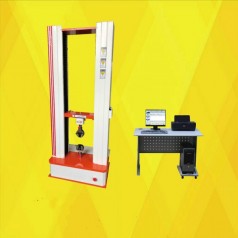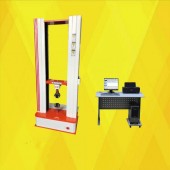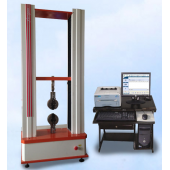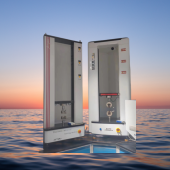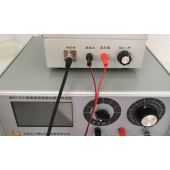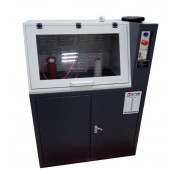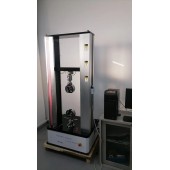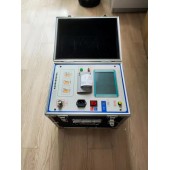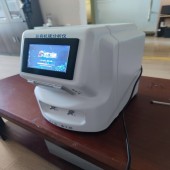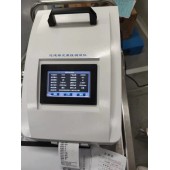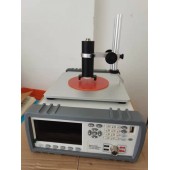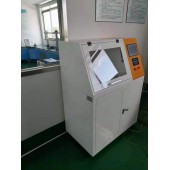双柱电子拉力试验机--升*款
软件说明
a. 软件系统:中英文Windows2000/XP/Win7平台下软件包
b. 自动储存:试验条件、试验结果、计算参数、标距位置自动储存。
c. 自动返回:试验结束后,试验机横梁会自动返回到试验初始位置。
d. 连续试验:*批试验参数设定完成后,可连续进行测试。
e. 多种曲线:同*图形上可显示多种不同的曲线:荷重--位移、荷重-时间、位移--时间、应力—应变、荷重—两点延伸等到多种曲线。
f. 曲线对比:同组试样的曲线可在同*张图上叠加对比。
g. 报告编辑:可按用户要求输出不同的报告形式。
h. 动态显示:测试过程中,负荷、伸长、位移及选中的试验曲线随着测试的进行,实时动态显示在主控屏幕上。
i. 自动变标:试验中负荷、伸长等曲线坐标,如果选择不当,可根据实测值的大小,自动变换座标。保证在任何情况下 曲线以 大的形式显示在屏幕上。
j. 峰值保持:在测试的整个过程中,测试项目的醉大值始终随着试验的进行,在屏幕窗口上显示。
k. 执行标准:满足GB、ISO、JIS、ASTM、DIN等多种试验方法和标准。
双柱电子拉力试验机--升*款 软件功能
软件基本功能: 能够测试材料的弹性模量(E)、上屈服强度、下屈服强度、抗拉强度(Rm)、规定塑性延伸强度、规定总延伸强度、规定残余延伸强度、规定非比例延伸力(Fp0.2)、规定非比例延伸强度(Rp0.2)、*大力(Fm)、*大力总延伸(△Lm)、断裂总延伸率、能量吸收、剥离力、剥离强度等等几十种参数。
|
软件功能 |
描述 |
|
联机/脱机 |
部分功能在脱机情况下也可使用 |
|
用户管理 |
用户权限管理,多用户管理 |
|
硬件参数管理 |
1.可编辑主机参数和传感器硬件参数 2.可管理多个传感器信息 |
|
传感器管理 |
传感器的方向辨识、校准、检定、切换等等 |
|
执行标准管理 |
1.可添加自定义试验标准和试验参数并导入导出试验标准 2.支持GB、GB/T、BS、ASTM、ISO等多种标准 |
|
试验方案 |
1.编辑好的试验方案可导入到其他试验机上使用 2.通过编辑运行方案,可实现力控、位移控、变形控等多种控制方式组合运行,从而满足任何试验运行需要 |
|
曲线显示 |
1.单图显示:显示力-时间,变形-时间,位移-时间、应力-时间、应变-时间、力-变形、力-位移、应力-应变等中的任意需要的*组曲线 2.多图显示:显示力-时间,变形-时间,位移-时间、应力-时间、应变-时间、力-变形、力-位移、应力-应变等中的任意需要的三组曲线,便于对比分析。 |
|
试验结果及曲线分析 |
1.曲线坐标预设或在线设置;曲线平移、缩放 2.试验数据可通过曲线遍历和曲线回放查看 3.可在曲线上显示、修改于保存结果点 |
|
试验报告 |
支持Word和Excel格式报告输出。有定制、预览、输出/导出等功能 |
|
试验数据管理 |
1.可查询、删除、保存试验数据 2.可继续未完成的批量试验 |
|
与手控器关系 |
手控器功能与软件运动控件功能对应相同 |
|
加密 |
通过加密工具可以设置控制器的使用期限 |
|
单位参数 |
可根据需要增加各种单位 |
|
修约方式 |
可根据标准要求对结果项进行各种修约 |
常见故障:
1:上升、下降、试验操作时,按下键后显示停止
解决方案:1:检查系统设置当前量程设置和过载保护率
2:检查速度参数是否变化
3:检查传感器是否过载
2:上电后仪表蓝屏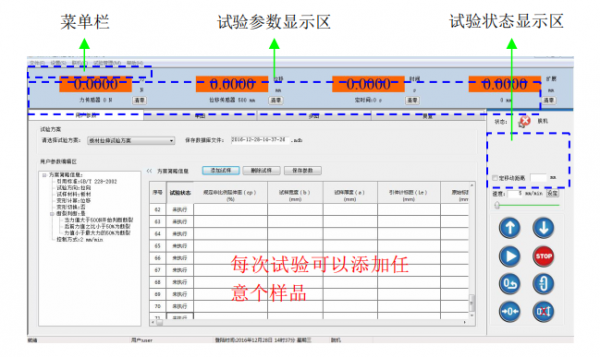
解决方案: 1:重新上电
2:重新上电如果不行,拿到没有干扰的地方上电试*下
3:联系生产厂家更换液晶屏
3:横梁不移动
解决方案:1:检查数据线是否连接号
2:检查是否过载,传感器是否损坏
3:是否限位,移动磁铁
4:仪表不准确
解决方案: 1:传感器是否损坏
2:调整了标定系数
3:是否年检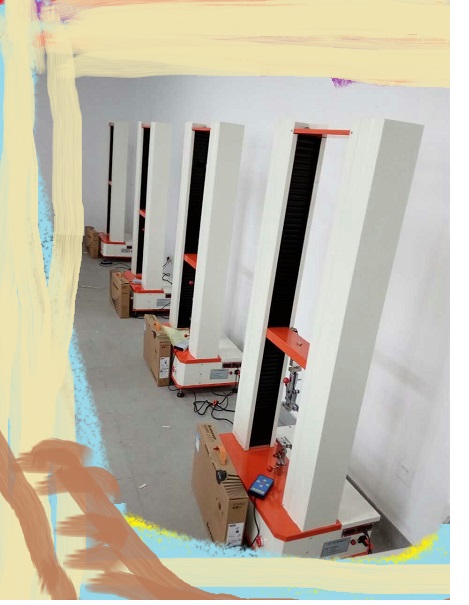
试验机仪表:
本仪表采用国际比较*进的放大器,A/D、微处理器、高性能高清晰的液晶显示屏构成,整个系统采用类似手机PDA键盘,光标导航,全中文显示,浮点数数据处理,结构简单操作方便,自动计算存储,适合于企业,质检单位材料力学性能检测仪表。
注意事项:
1初次开机前,请检查各种连线的准确性以及输入电源的正确性,电源*定为交流220V交流电源,接地良好。
2试验前,请正确设置试验参数,以保证试验数据的准确性。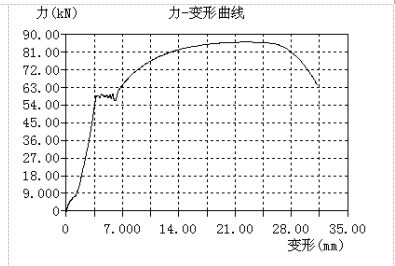
试验
1、 **使用“上升”和“下降”调整中横梁的位置来夹取试样(试样夹上之后,不能太紧,不能带力)
2、 按*下“力清零”键,把力清掉,按下“试验”键开始做试验,直到试样被破坏,设备自动停机,出现数据。
3、 如果试样已破坏,设备没有自动停机,则手动按下“停止”然后,进入“系统设置”更改*下“破型判断”和“破型起限”的值,已达到自动停机的目的。
4、 试验完成,关闭电源,打扫卫生。
工作环境条件
1 在室温100C~350C范围内,相对湿度不大于80%;
2 在稳固的基础或工作台上正确安装,水平度为0.2/1000;
3 在无震动、无腐蚀性介质和无较强电磁场干扰的环境中;
4 电源电压的波动范围不应超出额定电压的±10%。
注意事项:
1初次开机前,请检查各种连线的准确性以及输入电源的正确性,电源*定为交流220V交流电源,接地良好。
2试验前,请正确设置试验参数,以保证试验数据的准确性。
菜单设置
按‘设置’键进入选择界面界面显示‘系统设置’‘数据’。
系统设置:包括‘试验方法’‘返回设置’‘预紧力’‘破型判断’‘破型起限’‘高速设置’‘速度参数’‘*大量程’‘过载保护率’
试验方法: 进入界面后光标在此行闪烁,按数字键‘1’,‘2’进行试验方法的选择
返回设置:返回速度的设置1-500mm/min任意速度输入
预 紧 力:表示当前力值大于或等于设定值时位移自动清零,此值任意设置
破型判断:表示当前试验力值下降大于设定力值时,试验机自动停机。
破型起限:表示当前试验力大于此设定值时,破型判断有效,破型判断破型起限,根据实际情况设置
高速设置:系统当前可以切换的*高速度值
中速设置:系统当前默认值,试验时,横梁移动时系统自动默认值
低速设置:系统当前可以切换的*低速度值
速度参数:系统调速的控制参数出场时调整,用户不能随意更改
*大量程:当前仪器的*大量程,根据传感器的大小而定,用户不能随意更改。
过载保护:当前仪器的过载保护率用户,不可随意更改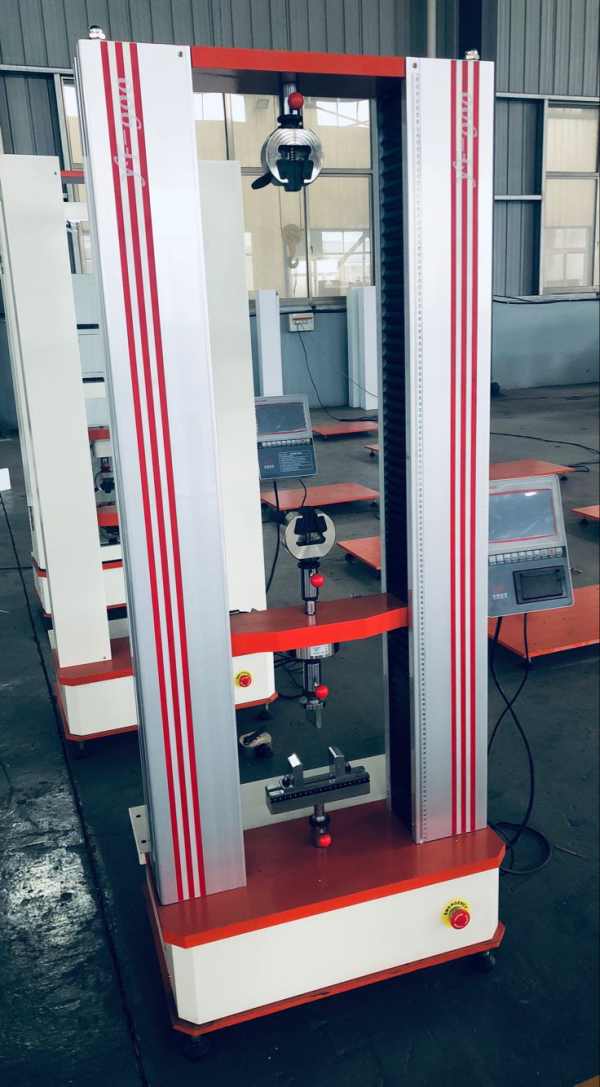
试验方法选择
进入系统设置后按数字键(1,2)选择试验方法1选择(抗拉强度)2(弯曲)完成后移动光标选择可以修改光标指定的各数据项,返回主界面后不同的试验方法有不同的试验界面,用户可根据自己的试验方法进行选择使用,横向断裂强度数据如果感觉精度不够时用户可以利用峰值自己进行运算。
注:(由于资源有限计算结果仅供参考)裂界面
维护与保养
1轴承内的润滑脂*般3—5年更换*次。
2 试验机应每年请当地计量部门检定*次。
基本参数部分
试验方案名:也就是*个试验方案的代号。试验方案名是*个试验方案的唯*标识,请你取名时注意根据不同试验的不同要求来命名,如金属拉伸试验,你用引伸计做,试样是棒材,你可以命名试验方案为"金属拉伸_引伸计_棒材",从而以示与用位移测量变形与其它试样形状的区别。试验方案命名请遵循微软Windows文件命名规范。建议使用全角方式的字符,半角方式的特殊字符*好不要使用
试验方向:通常可以这么说的,就是加载的方向,做拉向的试验就选择拉向,做压向试验就选择压向。需要在压的空间做试验,试验方案就要设置压向,需要在拉的空间做试验,试验方案就要设置为拉向。
变形计算选择:根据试验要求选择位移、变形、扩展设备。
试样材料形状:试样的形状。(这里有六种形状提供选择:①棒材,试样尺寸输入试样直径;②板材,试样尺寸输入试样宽度和试样厚度;③管材,试样尺寸输入试样外径和试样壁厚;④异型,试样尺寸直接输入原始横截面积;⑤忽略,所有结果值与试验原始横截面积无关。)
自动返回:试验运行结束自动恢复到初始的受力零点。
预加载力:就是试验力达到这个设置力,软件才开始保存采样的数据,也就是到这个时刻开始,采样数据才有效。这*项目的是为了消除夹具、试验等连接部分的间隙而设置,*般可以设置为建议值(为当前力传感器满量程的5/10000)。达到预加载力的这个时刻软件对变形传感器进行自动清零。
过滤点数:就是去除掉试验过程中所有采样点中*后面的点数。试验结束时,由于机器采样速度很快,比如会把试样断裂时的无用的数据也采到了,故在此去除*后面的*些点数,以免影响断裂力的求取或曲线的美观。*般32(这个也是经验值)就可以了。如果试验方案中是多步试验,*后那*步是保载过程,并且选择了间隔采样的话,强烈建议【去除点数】设置为0即可。
定负荷:是*个重要的试验停止条件,就是试验在过程中试验力达到这个定力(单位为:N)时候,试验就自动结束。比如你做某个试验,需要在试样受力达到1000N,就停止试验,你这里就可以设置为1000即可。这个停止条件在其他时候还可以有效保护力传感器,比如这台试验机当前力传感器的*大量为10kN,我们做试验过程不允许试验力超过10kN,如果我们在这里定力停止条件设置为10000N,也就是当前力传感器的满量程,这样在试验过程中试验力*达到10000N就会自动停止试验,这样就可以保护力传感器。
定变形:这也是*个试验停止条件,这里的定变形是指用引伸计测量的变形值达到这个定变形值,试验就会自动停止。用户可以参考定力的用法使用这个停止条件。这个停止条件只有变形传感器选择引伸计时候才有用的,*般用得很少。
定位移:这也是*个试验停止条件,就是指当位移测量的变形达到这个定位移值,试验就会自动停止。用户可以参考定力的用法使用这个停止条件。
售后服务
*、安装调试:协助试验机的安装,负责试验机的运输、调试。
二、验收标准:试验机按订货技术附件进行验收。终验收在买方进行,对用户提供的试样进行试验,并提供测试报告。
三、培训:安装调试同时,在仪器操作现场*次性免费培训操作人员2-3名,该操作人员应是由需方选派的长期稳定的员工,培训后能够对设备基本原理、软件使用、操作、维护事项理解和应用,使人员能够独立操作设备对样品进行检测、分析,同时能进行基本的维护。
四、软件升*:终生免费提供新版本控制软件。
Basic parameters section
Experimental Plan Name: This is the code name of an experimental plan. The name of the test plan is the unique identifier of a test plan. When naming, please pay attention to naming according to the different requirements of different tests. For example, in the me-tal tensile test, if you use an extensometer to do it, and the sample is a bar, you can name the test plan "me-tal Stretching Stretching Elongation Meter Bar" to show the difference between measuring deformation with displacement and other sample shapes. Please follow the Microsoft Windows file naming convention when naming the experimental plan. It is recommended to use characters in full width mode, and special characters in half width mode should not be used
Test direction: It can usually be said that the direction of loading is chosen for tensile tests and compressive tests. The experiment needs to be conducted in a compressed space, and the experimental plan needs to be set in a compressed direction. The experiment needs to be conducted in a tensioned space, and the experimental plan needs to be set in a tensioned direction.
Selection of deformation calculation: selec displacement, deformation, and expansion equipment according to experimental requirements.
Sample material shape: The shape of the sample. (There are six shapes to choose from: ① bar, sample size input sample diameter; ② plate, sample size input sample width and thickness; ③ pipe, sample size input sample outer diameter and sample wall thickness; ④ irregular, sample size input original cross-sectional area directly; ⑤ ignored, all result values are independent of the original cross-sectional area of the test.)
Automatic return: After the test run is completed, it automatically returns to the initial force zero point.
Pre loading force: It means that the software only starts saving the sampled data when the experimental force reaches this set force, which means that the sampled data is only valid from this moment on. This project is designed to eliminate gaps in connecting parts such as fixtures and tests, and can generally be set to the recommended value (5/10000 of the current force sensor's full range). At the moment when the preloading force is reached, the software automatically zeros the deformation sensor.
Filter point count: It means removing the last point count from all sampling points during the experimental process. At the end of the experiment, due to the fast sampling speed of the machine, such as collecting useless data when the sample fractures, the last few points are removed here to avoid affecting the calculation of fracture force or the appearance of the curve. Usually 32 (which is also an experience value) is sufficient. If the experimental plan involves multi-step testing, and the last step is the load holding process, and interval sampling is selected, it is strongly recommended to set the [number of removed points] to 0.
Fixed load: It is an imp0rtant test stopping condition, which means that the test will automatically end when the test force reaches this fixed force (unit: N) during the process. For example, if you are conducting a certain experiment and need to stop the test when the force on the sample reaches 1000N, you can set it to 1000 here. This stopping condition can also effectively protect the force sensor at other times. For example, the maximum current force sensor of this testing machine is 10kN, and we do not allow the test force to exceed 10kN during the testing process. If we set the stopping condition to 10000N, which is the full range of the current force sensor, the test will automatically stop as soon as the test force reaches 10000N during the testing process, which can protect the force sensor.
Fixed deformation: This is also a stopping condition for the experiment, where the fixed deformation refers to the deformation value measured with an extensometer reaching this fixed deformation value, and the experiment will automatically stop. Users can refer to the usage of Dingli to use this stop condition. This stopping condition is only useful when selecting an extensometer for deformation sensors, and is generally rarely used.
Positioning displacement: This is also a stopping condition for the experiment, which means that when the deformation measured by displacement reaches this positioning displacement value, the experiment will automatically stop. Users can refer to the usage of Dingli to use this stop condition.
after-sale service
1、 Installation and debugging: Assist in the installation of the testing machine, responsible for the transportation and debugging of the testing machine.
2、 Acceptance criteria: The testing machine shall be accepted according to the ordered technical attachments. The final acceptance shall be carried out by the buyer, who shall conduct tests on the samples provided by the user and provide test reports.
3、 Training: During installation and debugging, 2-3 operators will be trained free of charge at the instrument operation site at once. These operators should be long-term and stable employees selected by the demand side. After the training, they should be able to understand and apply the basic principles, software usage, operation, and maintenance of the equipment, so that they can independently operate the equipment to test and analyze samples, and perform basic maintenance.
4、 Software upgrade: New version control software is provided for free for life.

